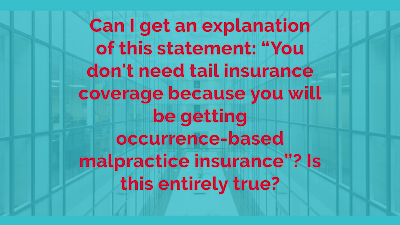How do I know if liability-only auto insurance is right for me? A great question.
The answer lies somewhere between a matter of preference and mathematics.
In other words, there are subjective and goal means to see if liability-only coverage is right for you.
MATHEMATICS: Here’s a couple of geeky, yet goal formulas that may help with the decision.
Formula #1: X / Y = Z
Where X = Vehicle’s Value, Y = Cost of physical damage coverage (comprehensive and collision), and Z = the number of years the cost of physical damage coverage would equal the value of the vehicle.
Example:
(X) Vehicle Value = $5,000 (divided by)
(Y) Cost of Comprehensive & Collision = $500 (equals)
(Z) Number of Years the cost of coverage equals the value of the vehicle = 10 years
Formula #2: A - X = B
If “B” is a negative number, liability-only auto insurance probably isn’t for you.
If “B” is a strong positive number, liability-only may be an option.
Preference -
Do I want to put my savings at risk to repair and potentially replace my vehicle?
There’s no right or wrong answer to the liability-only auto insurance question. If the math makes sense, it is worth consideration.
Higher Deductibles
Comprehensive
Only (No Collision)
How do I know if liability-only auto insurance is right for me? Regardless, liability-only coverage is right for you only if it makes financial sense and you feel comfortable with the decision
TLDNR: It is accurate, but at least one case where not. Property and Casualty insurance policies can be broken down into two broad classes of coverage: Occurrence and Claims Made.
The VAST majority of insurance policies are all home & car, most business policies are sold on an Occurrence basis. A few policies covering complex or long-tail liability exposures are written and sold on a claims-made basis.
The difference is that the insurance policy responds based upon whether occurrence or claims are made. An occurrence policy will pay if the claim occurred when the insurance policy covered the risk. A claims-made policy will only cover if the claim occurred and was reported (the claim was made) while the policy was in force.
Some liability claims happen, but take a while to become obvious and for the claim to be presented. Let’s look at insurance on an Occurrence basis:
The store’s insurance policy was renewed on January 1, and the store owner switched from Insurance Company A to Insurance Company Z. Because the claim OCCURRED on December 1, when the insurance was with Company A, it is Company A’s loss to adjust and pay
Now if policy A was written on a claims-made basis, then Company A does not have to respond, because the claim was not made while Company A was the insurer Meanwhile, Company Z doesn’t have to pay, because the claim occurred before Company Z insured the property
Why doesn’t the startup of Y Combinator build their own insurance, healthcare, and manage them as a startup?
They have. Y Combinator funds life sciences companies, close to 350 as of winter 2021. Most are deep tech, things like therapeutics, drug, and organic synthesis, infrastructure , devices, diagnostics, genomics, health finance, records and compliance, data and analytics, and intellectual property
What you don’t see are:
Y Combinator doing business. Y Combinator’s business is to make investments and also to run business acceleration programs, not to start its own businesses But, many of the Y Combinator companies do business with each other, and with the wider startup ecosystem If you put all the YC healthcare companies together you could cobble together an entire health care system, everything but the doctors and the hospitals
(Source of the article: www.quora.com)












0 Comments